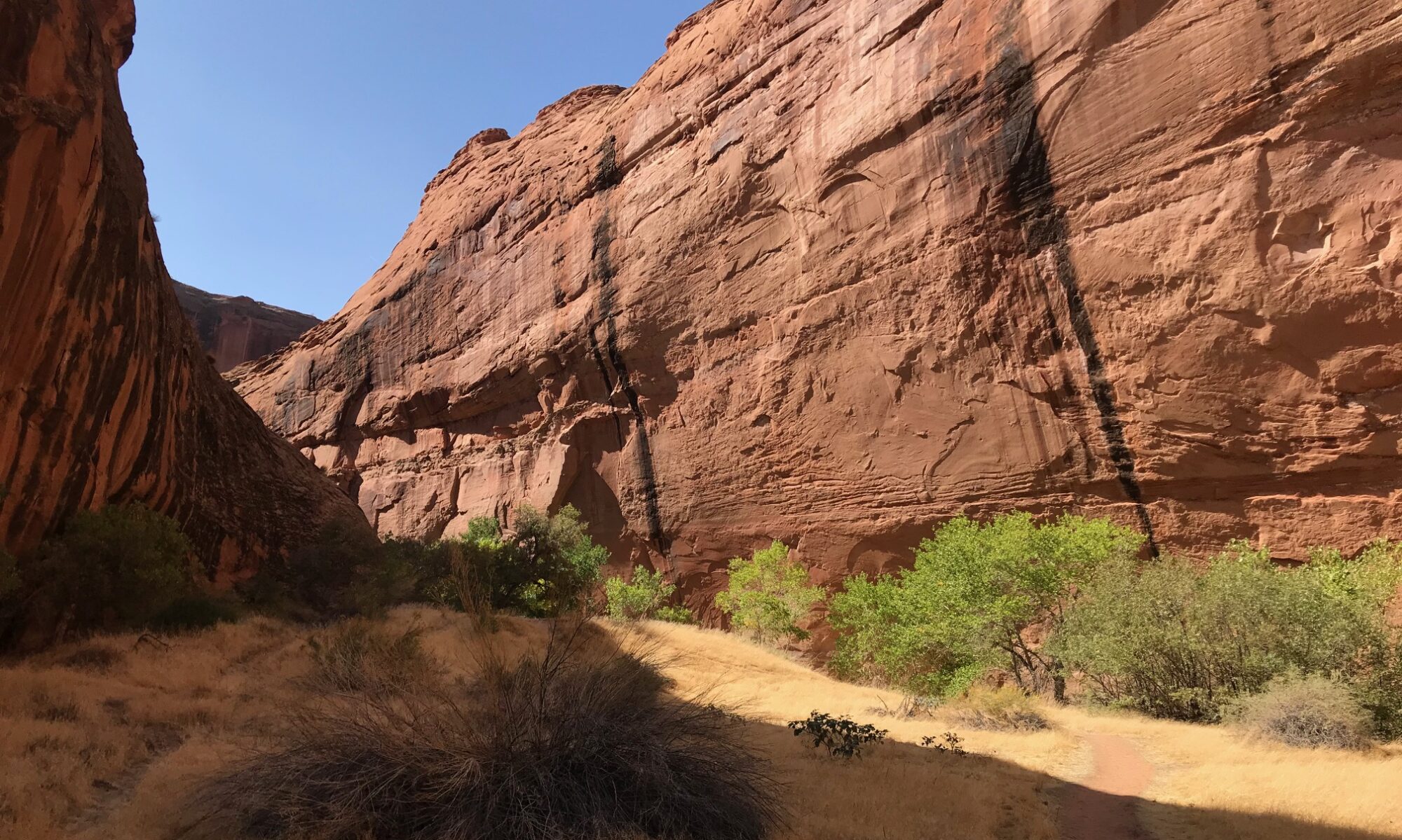By Annette Rose of Eugene, Oregon

I was in my 50’s when I first stepped into a canoe. I figured it was something I could do out in Nature and still sit down. Through the University of Utah I enrolled in a three-day canoe trip on Shoshone Lake in Yellowstone. My next class outing went across Lake Powell to Moki Canyon. What really got me hooked on canoeing was a four-day excursion in Utah’s Labyrinth Canyon on the Green River. The 120-mile stretch of the Green River from the Utah town of the same name wanders through Labyrinth and Stillwater Canyons to the confluence with the Colorado. It is one of the premier flat-water stretches of river in the United States, accessible to novice and expert alike — to solo travelers as well as families. Canoeists need not rough it. A good deal more gear will fit in a canoe than a backpack; comfort items like tables, chairs, roomy tents; a cooler for fresh food and drink; as much water as needed for 3-8 days or so.
Hiking up Labyrinth’s side canyons you might encounter signs of ancient cultures, such as granaries and petroglyphs. Or you might see rock inscriptions and art by early trappers and river explorers; and sadly, some 20th century vandalism. Along some of the bends in the river are old mining roads, left over from the days of uranium mining, some of which travel right beside the river bank. These dirt roads and trails were later appropriated by jeeps and ORVs [Off-Road Vehicles] for recreation, a practice which has accelerated. Off-road use scars the landscape, chokes the air with dust; disturbs sacred cultural sites, delicate desert soil, riparian vegetation, wildlife, and the quiet and solitude of the canyon.
Under the Bureau of Land Management’s lackluster management of the Labyrinth area, ORVs were allowed to travel nearly anywhere. That is, until recently. Pressured by SUWA, other environmental groups, and indigenous peoples, the BLM’s new Labyrinth Rims/Gemini Bridges travel management plan now prohibits motorized vehicles in the side canyons and along the river. It enables river travel in a natural setting, without dust and the noise of motorized vehicles reverberating off the canyon walls. This BLM map shows the newly closed trails in red.
Now you can travel down the river as Nature intended. The river begins among low sandy hills, gradually cuts deeper into the rock until you find yourself in a hallway of red sandstone, capped by blue sky, fringed with green foliage, meandering across the Colorado plateau. The canyon is a place of profound solitude and peace. Proceeding down river, the sounds of geese, herons and ravens echo off the rock walls. Imagine, after a challenging day on the river struggling against brisk upstream winds you’ve established the perfect campsite. Tent erected, dinner over, sitting in a comfortable chair, you contemplate the river. Perhaps a deer walks down to the river to drink, or a pair of river otters swims up to a nearby bank. As the sun sets, the canyon walls begin to glow golden orange, the sky shades to purple, and at night the ink-black heavens glitter with infinite stars.


